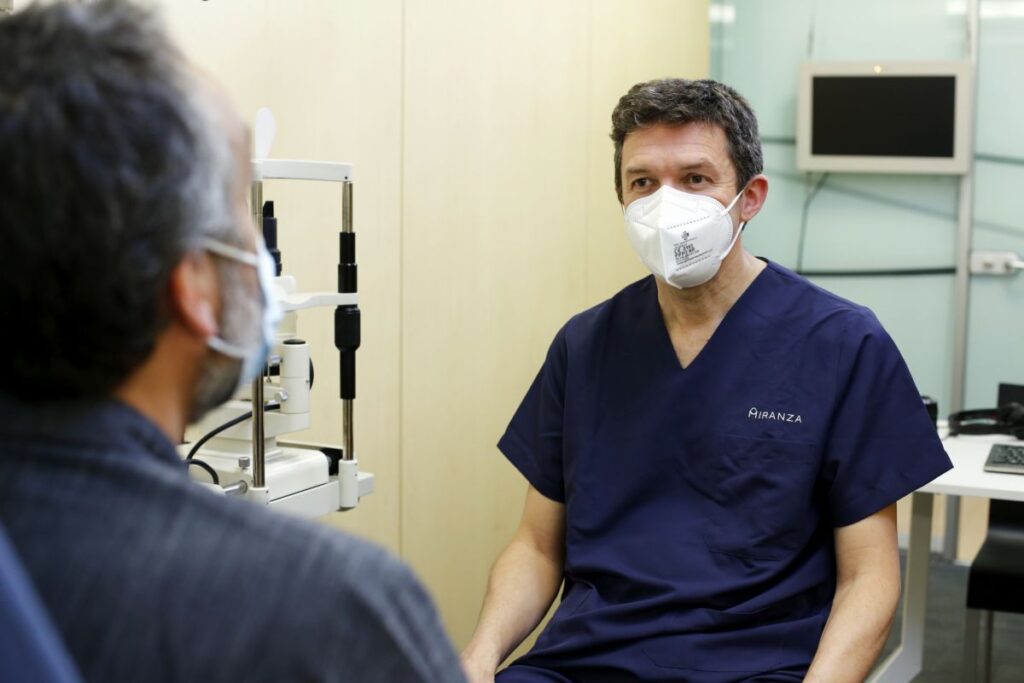
Miranza applies new drug to keep the most severe form of AMD stable twice as long
New drugs and devices provide room for hope for patients, reducing their dependence on eye injections
Age-related Macular Degenaration (AMD) affects one third of the population over the age of 70 and is the leading cause of blindness in the over-55s in developed countries. Its wet or rapidly evolving form affects about 10% of people with AMD, but is responsible for 90% of cases of severe vision loss from this disease. Now, new drugs and devices are opening the door to an improvement for patients and a significant increase in their quality of life.
How does AMD occur?
AMD results from the growth of fragile new blood vessels behind the macula, the central part of the retina, hence causing, especially in its wet forms, a rapid loss of central vision, usually within a few days.
In recent years, management of the wet form of the disease has been based on halting the process by means of drugs called antiangiogenics, which are molecules capable of inhibiting the growth of new macular vessels. Specifically, with early detection, if these neovessels have not excessively altered the macular region, it is often possible to stabilise and improve the degeneration.
However, for Dr Miguel Ruiz, a retina specialist at Miranza, “the biggest problem with current therapies is that their effectiveness, although high, is very limited in time, thus forcing patients to undergo recurring follow-ups and injections throughout the year and, in some cases, every month.”
According to the Group’s ophthalmologists, “the immediate future in current lines of research focuses on the possibility of increasing the duration of the effect of therapies on inhibiting new vessel growth.”

Three scientific milestones as a turning point in the treatment of rapidly evolving AMD
In this regard, Miranza’s specialists explain that, in the coming months, three scientific milestones will materialise that will improve the quality of life of these patients, hence making it possible to space out injections and the frequency of their visits to the ophthalmologist.
- The first of these milestones is availability in Spain. In fact, Miranza’s centres are already using this new drug, which is capable of inhibiting neovessels and keeping the disease stable for almost twice as long as current drugs.
- The second milestone is the upcoming marketing of a reservoir device, a therapeutic approach that is implanted in the eyeball and a microreservoir in which the drug is injected every six or more months, depending on disease activity, and is released slowly, thus making it possible to distance the time between injections.
- The third milestone is also a new drug, with the ability to “dry” the macular fluid for twice as long as current drugs.
“All these advances, which we hope to be able to apply in their entirety very soon, open the door to a future of hope for our patients with regard to the control of this disabling disease, with therapeutic options that will have greater durability, which will undoubtedly benefit them, thus avoiding having to go to the ophthalmologist so often to control the disease or get intraocular injections”, concludes Dr Miguel Ruiz.